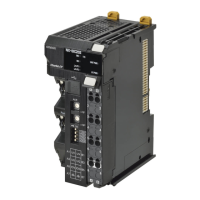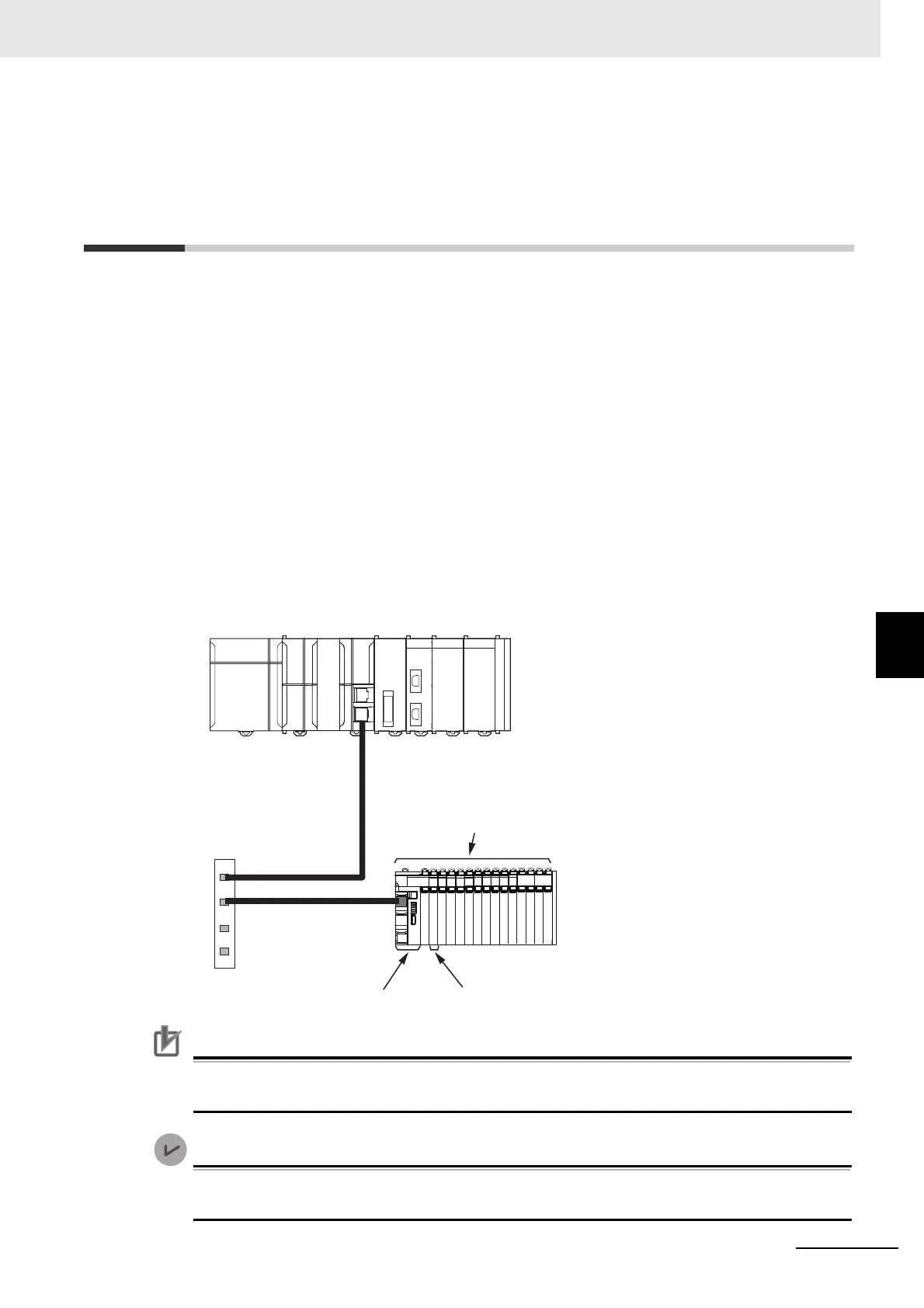A - 45
Appendices
NX-series EtherNet/IP Coupler Unit User’s Manual (W536)
A-3 Examples of EtherNet/IP Slave Terminal Settings and I/O Data Control Procedure Using
Messages
A
A-3 Examples of EtherNet/IP Slave Termi-
nal Settings and I/O Data Control Pro-
cedure Using Messages
You can use messages to access CIP objects to set up EtherNet/IP Slave Terminals and control I/O
data even if you do not use tag data links (implicit messages).
This section shows examples of setting up EtherNet/IP Slave Terminal and controlling I/O data with
messages.
Refer to A-1 Supported CIP Objects on page A-3 for details on CIP objects.
When you use devices that do not support explicit messages, access CIP objects by using the
TCP/UDP message service. For details on accessing CIP objects by using the TCP/UDP message ser-
vice, refer to A-2 TCP/UDP Message Service on page A-34.
The following six types are shown as procedure examples.
• Changing the Unit operation settings of an EtherNet/IP Coupler Unit
• Changing the Unit operation settings of one NX Unit
• Changing the Unit operation settings of multiple NX Units
• Changing the Unit operation settings of the entire EtherNet/IP Slave Terminal
• Initializing the Unit operation settings of one NX Unit
• Reading and writing I/O data of an EtherNet/IP Slave Terminal
Precautions for Correct Use
For details on checking for errors and troubleshooting during various settings with messages,
refer to 12-3 Checking for Errors and Troubleshooting with Support Software on page 12-10.
Using messages to set up EtherNet/IP Slave Terminal and control I/O data is supported for
NX-EIC202 version 1.2 or later.
EtherNet/IP port
EtherNet/IP Master
Ethernet switch
EtherNet/IP Coupler Unit
Entire EtherNet/IP Slave Terminal
NX Unit

